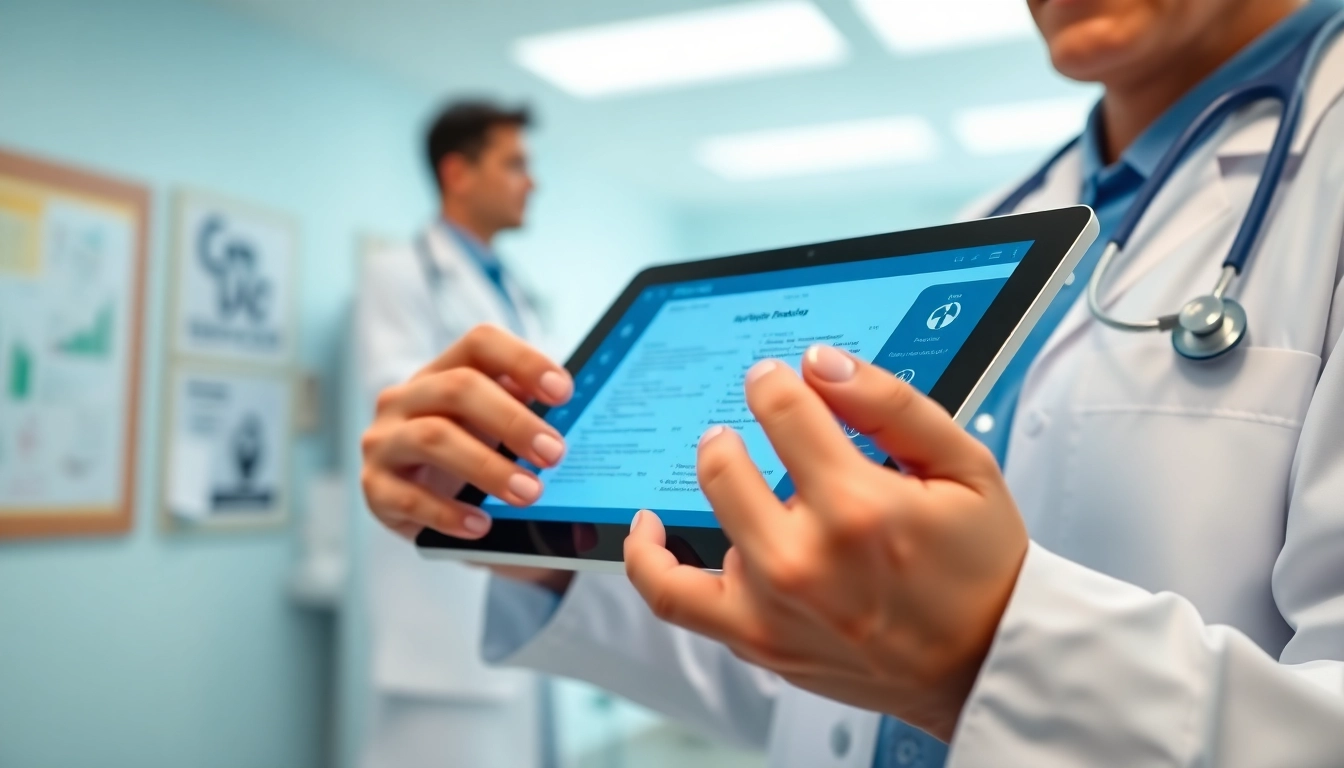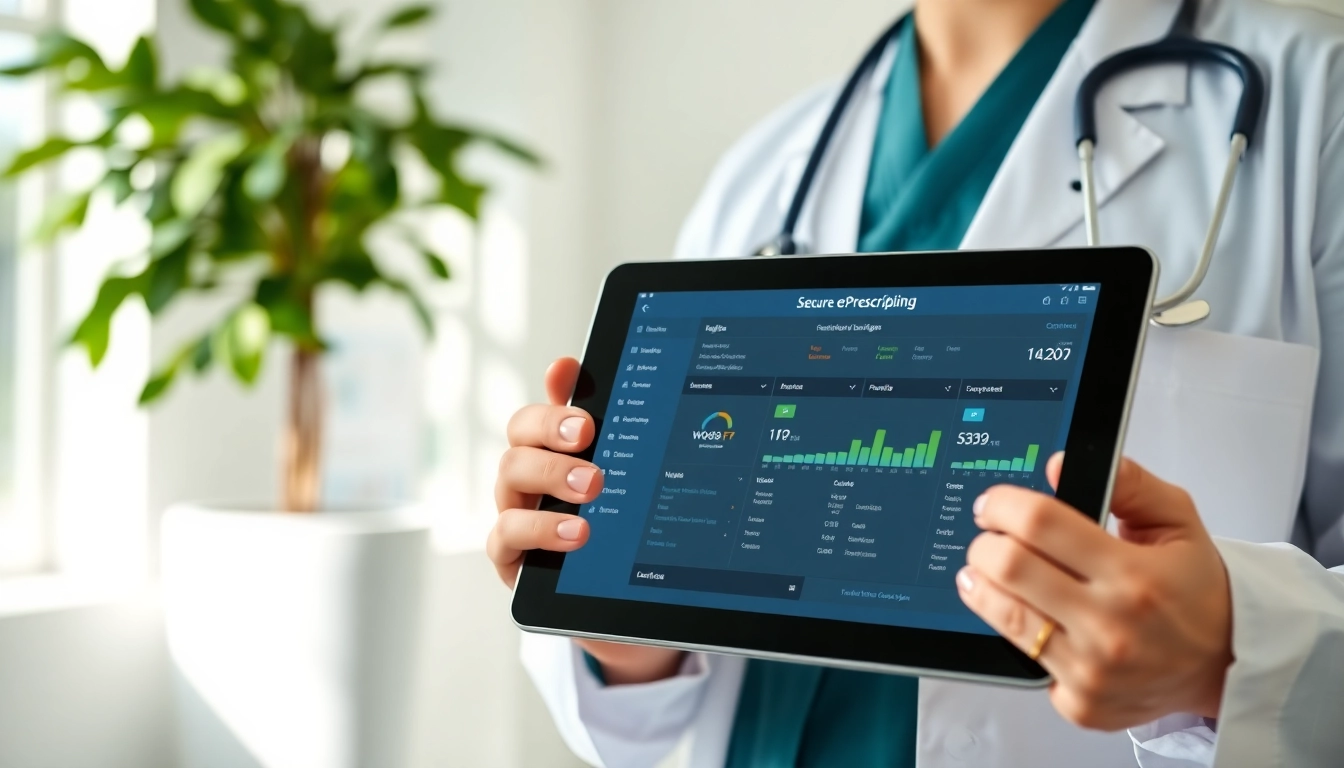Understanding Secure Eprescribing Solutions
In the rapidly evolving landscape of healthcare, secure eprescribing solutions have emerged as a cornerstone technology. These solutions provide healthcare providers with a digital framework to create, manage, and transmit prescriptions electronically, significantly improving the efficiency and safety of medication management. As healthcare organizations continue to seek ways to optimize their operations while adhering to stringent regulatory standards, understanding the nuances of secure eprescribing becomes paramount.
What are Secure Eprescribing Solutions?
Secure eprescribing solutions refer to electronic platforms that allow medical practitioners to send prescriptions directly to pharmacies via a secure electronic system. This technology not only eliminates the need for handwritten prescriptions but also enhances accuracy, reduces medication errors, and improves overall patient safety. These solutions integrate seamlessly with Electronic Health Records (EHRs), providing healthcare providers with real-time access to patient medication histories and allowing for better-informed prescribing decisions.
Benefits of Using Secure Eprescribing Solutions
The implementation of secure eprescribing solutions offers a variety of benefits:
- Improved Accuracy: By utilizing a standardized electronic platform, the chances of errors due to illegible handwriting are virtually eliminated.
- Enhanced Efficiency: Prescribers can quickly input and send prescriptions to the pharmacy, reducing wait times and improving patient flow.
- Streamlined Communication: Secure eprescribing facilitates seamless communication between prescribers, pharmacies, and patients, enhancing the overall medication management process.
- Improved Compliance: These solutions help healthcare providers adhere to regulatory requirements by ensuring secure transmission of sensitive patient data.
- Patient Safety: Access to comprehensive medication history minimizes the risk of drug interactions and enhances patient safety.
How Secure Eprescribing Solutions Improve Patient Safety
Patient safety is one of the most critical aspects of healthcare delivery. Secure eprescribing solutions help enhance patient safety in several ways:
- Real-Time Access to Patient Data: Healthcare providers can view a patient’s entire medication history, making it easier to identify potential drug interactions and contraindications.
- Electronic Monitoring: Eprescribing solutions often include features that allow for monitoring of prescription patterns, enabling early detection of problems such as overmedication or inappropriate use of controlled substances.
- Alerts and Notifications: Real-time alerts can notify providers of potential allergies or interactions before finalizing a prescription.
Key Features of Secure Eprescribing Solutions
Security Measures for Protecting Patient Information
Data security is paramount in healthcare. Secure eprescribing solutions incorporate advanced security measures to protect sensitive patient information:
- Encryption: All transmitted data is encrypted, ensuring that it cannot be accessed by unauthorized users.
- Authentication Protocols: Healthcare providers must authenticate their identities before accessing or sending sensitive data.
- Audit Trails: Comprehensive logs of all transactions are maintained, allowing for accountability and traceability.
User-Friendly Interfaces for Healthcare Providers
Ease of use is a vital feature for secure eprescribing solutions. Providers need intuitive interfaces that facilitate quick and accurate prescription writing:
- Streamlined Workflows: User-friendly dashboards allow providers to quickly navigate between various patient records and input prescriptions.
- Accessibility: These solutions can be accessed from multiple devices, including tablets and smartphones, making it easier for providers to prescribe medications on the go.
- Training and Support: Many solutions offer training sessions and ongoing support to help healthcare professionals adapt to the new systems seamlessly.
Integration with Existing Healthcare Systems
Secure eprescribing solutions should seamlessly integrate with existing healthcare IT systems:
- Electronic Health Records (EHRs): Integration with EHRs allows for a holistic view of patient data, facilitating more informed prescribing.
- Pharmacy Systems: Direct connections to pharmacy systems ensure prescriptions are transmitted directly to the pharmacy of choice, reducing wait times for patients.
- Billing Systems: Linking with billing systems minimizes discrepancies in billing and improves the revenue cycle management.
Challenges in Implementing Secure Eprescribing Solutions
Technological Barriers for Healthcare Providers
Despite the many benefits, implementing secure eprescribing solutions can be challenging. Some of the technological barriers include:
- Infrastructure Limitations: Some healthcare facilities may lack the necessary IT infrastructure to support complex eprescribing systems.
- Interoperability Issues: Different systems may not communicate effectively, which can hinder the overall efficiency of the prescribing process.
- Initial Costs: Upfront costs for implementation can be high, leading some organizations to postpone or avoid adoption.
Regulatory Compliance and Its Implications
Healthcare providers must navigate a complex landscape of regulations when implementing secure eprescribing solutions:
- Compliance Standards: Adhering to regulations such as HIPAA is critical for protecting patient privacy and ensuring secure data transmission.
- Training and Education: Ongoing training is required to ensure all staff members are aware of legal obligations and best practices for data management.
- Responsive Updates: Regulatory requirements can change, necessitating updates to technology and practices to remain compliant.
Overcoming Resistance to Change in Medical Practices
Resistance to adopting new technologies is common in healthcare settings. Overcoming this resistance is essential for successful implementation:
- Involving Stakeholders: Engaging all stakeholders in the decision-making process can help address concerns and foster buy-in.
- Highlighting Benefits: Demonstrating the value of secure eprescribing solutions, such as improved accuracy and efficiency, can motivate staff to embrace the change.
- Gradual Implementation: Introducing the system in phases can allow staff to adjust more comfortably to the new technology.
Best Practices for Effective Use of Secure Eprescribing Solutions
Training Staff for Smooth Adoption
Proper training is essential for successful integration of secure eprescribing solutions:
- Structured Training Programs: Comprehensive training programs should be developed to educate staff on system functionalities.
- Hands-On Workshops: Offering hands-on workshops can help staff become more familiar with the system in a supportive environment.
- Ongoing Support: Providing on-demand support and resources can help staff feel more comfortable navigating the new system.
Continuous Monitoring and Updating Security Protocols
Security is an ongoing concern. Regular updates and monitoring are critical:
- Regular Audits: Regular security audits should be performed to identify vulnerabilities and areas for improvement.
- Updating Software: Keeping the software updated ensures that the system is equipped with the latest security features.
- Incident Response Plans: Developing and maintaining incident response plans can help organizations respond effectively to potential breaches.
Engaging Patients in the Eprescribing Process
Patient engagement plays a vital role in the successful implementation of secure eprescribing solutions:
- Educating Patients: Informing patients about the benefits of eprescribing can enhance trust and cooperation.
- Encouraging Feedback: Patients should be encouraged to provide feedback on their experiences, which can inform improvements and adaptations.
- Supporting Communication: Facilitating open lines of communication between patients and healthcare providers can bolster patient satisfaction and adherence to medication.
Evaluating the Success of Secure Eprescribing Solutions
Key Performance Indicators to Measure Effectiveness
Determining the effectiveness of secure eprescribing solutions relies on several key performance indicators (KPIs):
- Prescription Error Rates: Monitoring the rates of prescription errors before and after implementation can serve as an important metric of success.
- Prescription Turnaround Times: Evaluating the time it takes for prescriptions to reach pharmacies can indicate the efficiency of the system.
- User Adoption Rates: Tracking staff usage of the system helps understand its acceptance and usability within the organization.
Patient Satisfaction and Engagement Metrics
Understanding patient perspectives is essential for evaluating the success of secure eprescribing:
- Patient Surveys: Regular surveys can measure patient satisfaction levels regarding the prescription process.
- Appointment Follow-up: Tracking follow-up appointment rates can help assess how well patients are managing their medications.
Feedback Loops for Continuous Improvement
Establishing feedback mechanisms is key to continuous improvement:
- Regular Review Meetings: Holding regular meetings with staff to discuss successes and challenges can foster a culture of improvement.
- Adaptable Protocols: Being willing to adapt protocols based on feedback ensures that the system remains effective and user-friendly.



